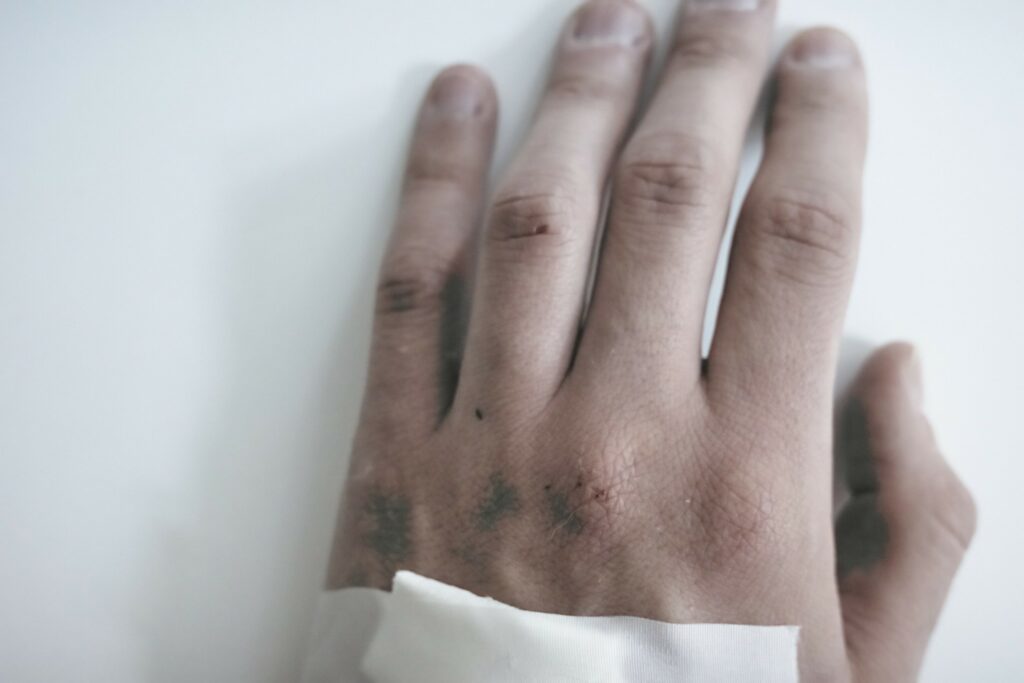The disease that worries health control bodies around the world was named monkeypox or monkeypox (monkeypox). But it is NOT being transmitted by monkeys, only between humans.
ADVERTISING
Why does the world only talk about this disease after the covid-19 pandemic?
The answer is simple: it is proliferating, cases and deaths are increasing, and the spread of the virus may remain – as happened with COVID-19 – uncontrolled.
In July, the World Health Organization (WHO) declared a state of Public Health Emergency of International Concern (PHEIC) for the disease. It is caused by a virus belonging to the genus Orthopoxivirus, the same as human smallpox, which has been eradicated since the 1980s and was more lethal.
Why was it named monkeypox?
A disease was discovered in 1958, when the virus was found – and described for the first time – in captive monkeys that were in Denmark. Research has shown that the virus has also been found in rodents. (G1)
ADVERTISING
Timeline
Three months after the beginning of the monkeypox outbreak, almost 28 thousand cases and 11 deaths from the disease have already been recorded worldwide, according to the World Health Organization (WHO).
The first infections of the disease in humans were identified in 1970, but the new explosion of contagions has several particularities and is seen as a health emergency in Brazil and the world.
Some scientists believe that the virus monkeypox has undergone genetic mutations, and, therefore, today's epidemiological picture is as it is.
ADVERTISING
See below what has already been discovered about prevention, symptoms, transmission and treatment of the disease:
(Source: National Health Surveillance Agency and the United States disease control and prevention agency (CDC))
Prevention
- wearing masks
- distancing: avoid kissing, hugging, having intimate or direct contact with objects used by an infected person, or contact with the skin of someone who has lesions similar to smallpox
- frequent hand hygiene
- frequent cleaning of environments that may have been contaminated
Symptoms
- widespread sores on the skin (face, palms of the hands, soles of the feet, eyes, mouth, throat, groin and genital and/or anal regions of the body) that form scabs and last 2 to 3 weeks
- fever (sometimes accompanied by muscle pain)
- headache, back pain, swollen glands, chills, exhaustion and last 2 to 3 weeks (initial symptoms)
- Lesions start out flat, then fill with fluid before crusting, drying and falling off
Transmission
- only between humans
- direct contact with secretions from the wounds of infected patients or with contaminated objects
- respiratory secretions
- there is a record of contamination by the virus between mother and fetus (through the placenta)
Most vulnerable
- health professionals
- newborns
- small children
- people with immune deficiency
See also: Brazil has 3 first cases of monkeypox in children
ADVERTISING
Treatment
In most cases, treatment involves clinical support and symptom relief. Within a few weeks, the body of patients with mild symptoms tends to eliminate the virus. In addition to seeking medical attention, in these cases, it is necessary:
- rest
- hydration
- medications to control fever or pain
Vaccine
Vaccines used to eradicate smallpox (caused by the smallpox virus) are 85% effective in preventing monkeypox, as the diseases are genetically similar. But, according to the WHO, it is not yet possible to distribute the vaccine throughout the world.
Pharmaceutical products
There is no specific medicine for monkeypox. Some antivirals are being tested and have proven effective in prevention and treatment.
ADVERTISING
In January 2022, for example, tecovirimat was approved. But, according to the WHO, “experience with these therapies in the context of a monkeypox outbreak is limited.”
Male-to-male transmission
The majority (98%) of infected patients are young men who have sexual relations with other men. The data was observed in more than 16 countries by a study published in The Lancet, which recently released research showing that 40% of patients with monkeypox were infected with HIV.
However, there is no scientific evidence that sexual intercourse or sperm can transmit the disease. That is, anyone, regardless of gender or sexual orientation, can be infected.
Alert for discrimination
The repercussion surrounding the disease led to misinformation on the internet. As a result, different entities drew attention to the risk of greater stigmatization of bisexuals and gays..
“We don’t want to make the same mistakes as HIV. At the time, our ignorance was very great. We just look at the number of cases as if it were necessarily associated with a community”, warned a WHO technician. (UOL)
Curto Curatorship
- 04/08/22 Government of SP announces plan to combat monkeypox
- 08/08/22 Monkeypox: misinformation also kills
- 04/08/22 Monkeypox: US declares health emergency
Curto Explain: everything you need to know and are embarrassed to ask!😉
⤴️click here to see more explanatory content.



